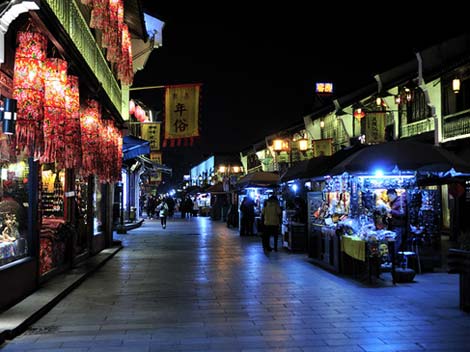Posted 2017/8/21
The suona, known as the Chinese oboe or trumpet, is the loudest of the traditional instruments, with a bright piercing sound. It is common in traditional bands playing at outdoor weddings, festivals, parades and funerals, especially in rural North China.

Because of its rural popularity, the suona has the reputation of a rather low-class folk instrument. But it also can be played with subtlety and emotion, expressing the human voice and a range of emotion. Frequently played as a bright, high-pitched instrument, it is known for evoking the singing of hundreds of songbirds. Suonas of different length have different sounds and convey different feelings.
Because the seemingly simple eight-hole instrument can be difficult to master, it has been called the “eight-eyed monkey,” a reference to the ornery primate. Today it has keys and is easier to play.
The suona dates back to the Han Dynasty (206 BC-220 AD) and probably originated in Central Asia. It holds an important position in the folk music culture in the north, particularly in the province of Shandong.
The suona has a conical wooden body, similar to that of the European oboe. However, it uses a brass or copper mouthpiece to which a small double reed is affixed, possessing a detachable metal bell at its end.
Today, the suona is made in several sizes. Since the mid-20th century, its modernized versions have been developed in China. They have keys similar to those of the European oboe so that they allow for the playing of chromatic notes and equal-tempered tuning. These modernized versions are widely used in the woodwind sections of Chinese traditional instrument orchestras.